Principles of VFX
Thaumatrope



The Thaumatrope was invented by John Ayrton Paris in the year 1825. It was known to be the first optical toy with pictures on each side. When spun by the strings it blends the two images together creating persistence of vision.
Zoetrope

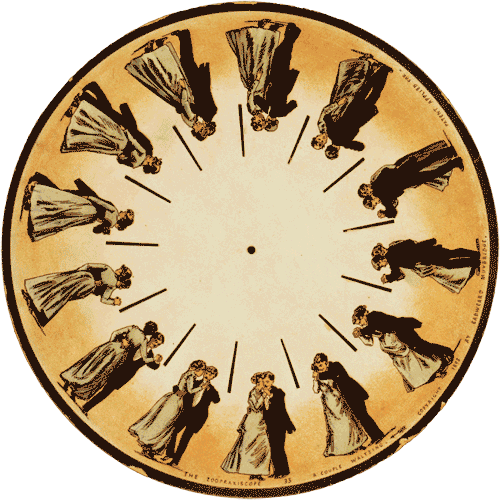

The zoetrope was invented in 1834 by William George Horner. It was an early form of motion picture projector that consisted of a drum containing a set of still images, that was turned in a circular fashion in order to create the illusion of motion.

Praxinoscope


The Praxinoscope was the next successor animation device of the Zoetrope. It was created in 1877 by Charles-Émile Reynaud and it used the same form of motion with pictures placed and spun around the inner surface of a cylinder.
Choreutoscope



Invented in 1866 by English physician Lionel Smith Beale The Choreutoscope is the first pre-cinema device to employ the same principle as the Cinematograph, an early film camera and projector.
Stephen Princes 2010 article 'Through the Looking Glass Philosophical Toys and Digital Visual Effects'
150 word summary.
After reading the philosophical toys and digital and visual effects it clearly explained how science has a pivotal role within visual effects. This means that filmmakers have to work side by side with professional scientist to make sure the scenes and effects created such as certain objects and environments meet the laws of physics correctly resulting in the movie effects to be more accurate and reinforcing that believability for the audience. This is as simple as getting the correct lighting when interacting with an object, making the flow of water realistic and even giving the correct detail when a fire is flickering. Furthermore, the article also explains perceptual realism and mentions the film Jurassic park. It explains how the actors can convey that the dinosaurs are actual there right in front of them even though we know that they don't exist, but the use of the visual and special effects along with the actors performance makes it very believable.

What is Digital cinema.
Annotated Bibliography
Lev Manovich's essay on what is digital cinema discusses how the development of digital media has resulted in cinema to not only convey storytelling to its viewers but also evoked a new way to tell its stories to the audience addressing more of an aspect to cinema compared to before. Within the essay the history of digital cinema is explained relating all the way back to the 19th century with the first pro cinematic devices such as the Phenakistiscope, Thaumatrope, Zootrope, Praxinoscope, and the Choreutoscope. All these cinematic tools were said to be manually hand drawn or painted and did not include any photographs until the end of the 19th century. Manovich then goes on to explain how the appearence of computer generated effects within Hollywood was a milestone when relating to digital cinema and for actual cinema overall. This means that the traditional film technology is now being replaced by new digital technology which will now result in to digitally create movie live action scenes through the computer 3-D animation software.


Digital Storytelling, the narrative power of visual effects in film.
Annotated bibliography and summary.
Within the book Digital Storytelling the chapter I will be discussing will be 'The Bastard Spawn Hollywood Computer Generated Effects Movies'. Throughout this chapter it discusses whether the prominent use of digital visual effects in film has impacted simple movie storytelling resulting in the actual quality of the narrative aspect in film to lack as opposed to older films. This means that older films were less dependant on using DVFx but had to focus more on the story driven films due to them not having the correct materials to engage the audience with the realism of visual effects we get nowadays. The chapter also states how DVFx are an important link to the story and how it's actually needed in particular movie genres to capture certain moments that will be impossible to capture in the real world but only by computer generated means. The movie genres that DVFx are predominantly used in are Sci-fi, Fantasy and action. Therefore movies like Star Wars or 2012 rely heavily on DVFx to tell the story and to make viewers be part of that other worldly reality.


The Code on the use of fractals in computer graphics summary.
After watching the clip from the Code on the use of shapes of fractals it explains how most of the naturals shapes we see in our day to day lives such as clouds, rocks and trees are all mathematically fractal and as a result of this they are implemented into movies to create the virtually realistic worlds. The beginning of the clip describes how a painters work which may look like completely messy work to some people is actually a secret work of art with different sizes of fractal patters all over it. This is also linked to trees as stated in the clip with each branch with similar pattens ranging in different sizes constantly growing and dividing forming what we call a tree. Near the end of the clip the merge with fractals and computer graphics was explained and it began with a man called Lauren who worked on Pixar movies wanting to create a mountain behind a computer generated image of an aeroplane but struggled to do this as he states that he found it extremely hard to create. However by the discovery and research on fractal mathematics it allowed him to create the mountain effect successfully by simply breaking it down into several amounts of triangle until it looks like a natural mountain. An animation was then created giving a clear view of the mountain 3 dimensional form.


The Uncanny Valley: why we find human like robots and dolls so creepy.
Annotated bibliography.
From the source from the Guardian on the Uncanny Valley it describes the term 'Uncanny Valley' to be something that has an unnaturally created human like appearance that gives us humans an unsettling and weird feeling when simply viewing or even with interaction. The main types of entities that create the uncanny valley response are robots and dolls as these convey human like traits such as a face, body, arms and legs. As a result of these traits the source believes that there is a clear trend on our perception of how a robot looks which can effect us on how uncomfortable we feel when around or viewing them. The source also states that the creepy and eeriness from a robot can be the result of facial features, mix of emotions and expressions such as smiling with angry looking eyes. This means that if a robot looks more human like with human facial features and can convey human emotions without looking creepy we would be slightly more comfortable around them when compared to them without it. The final chapter explains how the result of a rapid advance in technology mat cause us to one day no longer be able to distinguish the difference between human and robot and as a result of us being more aware of robots and having to interacting with something that looks, moves and talks like a human but isn't human can be really unsettling and creepy for us in the future.


Digital Storytelling - The relationship between digital visual effects and genre
Annotated bibliography
The chapter I will be discussing from the book digital storytelling will be chapter 7, ‘the relationship between digital visual effects and genre.’ From the first few paragraphs of this chapter the writer talks about what really makes a genre and what attributes define that genre for the audience when watching a particular film. For example, one of the genre’s mentioned was the sci-fi genre and it was explained how people usually relate this genre with spaceships creating confusion with other films that are still sci-fi like ‘back to the future’ which doesn’t include spaceships or any space activity at all. As a result of the sci-fi genre along with action and fantasy relying heavily on visual effects this chapter then begins to discuss whether DVFx are limited to these particular types of genres or instead begins to increase in others. It explains how DVFx are used heavily in the Sci–fi genre to reinforce that belief of being in space or another world. This also links to fantasy and explains how the violence in action and horror also involve VFX. The end of the chapter concludes by saying that the use of effect are increasing across genres with it even being used in simple dramatic films and as a result of us living in a technological advanced world DVFx will begin to increasing within genres in cinema.

The illusion of life: Disney animation by Thomas, Frank; Johnston, Ollie.
The illusion of life is a book which was released in the year 1981 and was written by two main Disney animators known as Ollie Johnston and Frank Thomas. In the book it contains many sketches to entire animation sequences like the Disney's animation art style. It also gives several glimpses into the workings of the animation masters at Disney's during the Golden Age of animation and as a result of popularity and success its used as a reference among many other professional animators. The animators and authors of the book Ollie Johnson and Frank Thomas were the ones that introduced the 12 basic principles of animation simply explaining the animation process of an animated character.

Disneys 12 principles of animation
1. Squash and stretch

The 1st principle is the squash and stretch animation and this is known to be the most important 1 out of the 12 principles. This is because it consist of 4 uses which is weight,gravity,mass and flexibility when applied to an animated character. As a result of this the squash face animation gets thinner when squashed but wider also meaning it has a consistent volume.
2. Anticipation

The next principle of animation shown to my left is Anticipation. Within this principle the aim for this is to prepare the viewer for something to happen before it actually does. For example in this animation it shows the character striking the hammer down on the ground but before he actually does it there it s a prolonged action reinforcing that anticipation for the viewer.
3. Staging

The third animation principle is staging this principle is mainly about keeping the focus on the most important form of animation within that scene. This means that anything else in the scene would be out of focus and have limited animation when compared to the main animated character that is in focus.
4. Straight ahead action and pose to pose
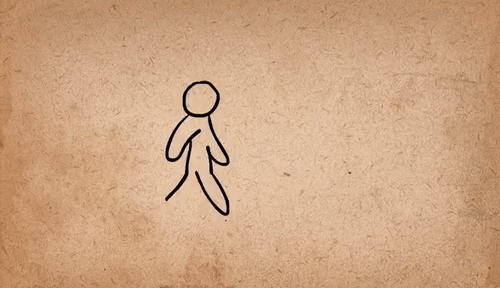
Straight ahead and pose to pose are two different ways to handle drawing in animation. The first method straight ahead involves drawing frame by frame form the beginning to the end. Doing this will result in more fluid and realistic movements for your character. On the other hand pose to pose only involves you drawing the first frame and the last with maybe a little bit in between.
5. Follow through and overlapping action

Follow through and overlapping action involves the different forms of motion where objects will stop at different time rates. From this animation image it shows the head moving back and fourth however when the head is stopped the head bob is till moving before it has a standstill and this is known as follow through animation. Overlapping action is where the parts move at the same time but at a different time rate.
6. Slow in and slow out
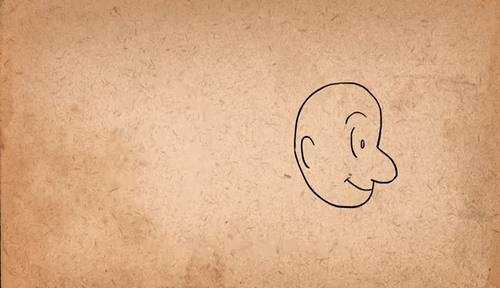
The next principle is slow in and out. This principle of animation involves the pacing of the animation meaning that it may start up slow and build that momentum into a fast piece of animation adding more and more frames each time.
7. Arc
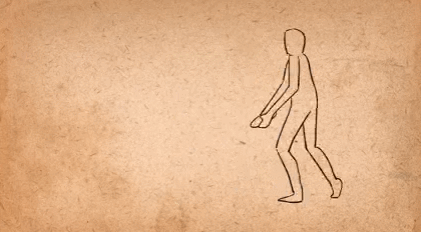
Arc animation is more based on physics automatically strengthening the realism of that particular piece of animation.
8. Secondary action
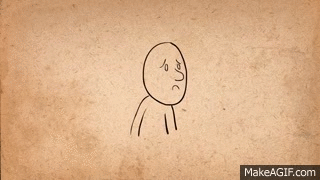
Secondary actions are used to support or emphasize the main action going on within a scene. Doing this can bring more life to your characters and reinforce the mood. For example the sad face of the character crying is strengthen by the secondary action of the tissue and eye rubbing.
9. Timing
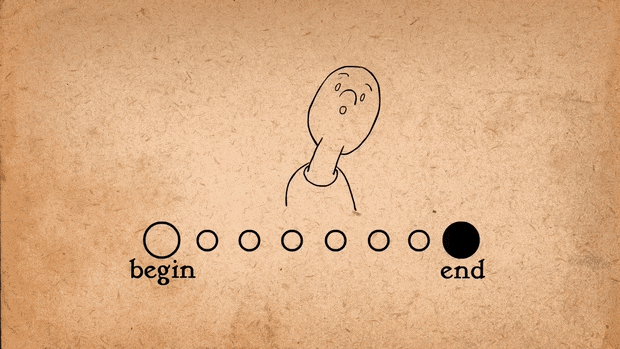
The next principle is based on timing. This means that when animating a particular character the correct timing has to relate to the laws of physics to make the animation as believing as possible as if the same effect will happen in the real world.
10. Exaggeration

Within animation the use of exaggeration can easily turn a particular scene from boring to exiting meaning too much realism may not also be effective to use. As a result of this the image shows the character hitting the bat on the others head and this conveys the strength and the amount of force used when hitting the head giving and having a more effect on the viewer when you compare it to the first animation.
11. Solid Drawing
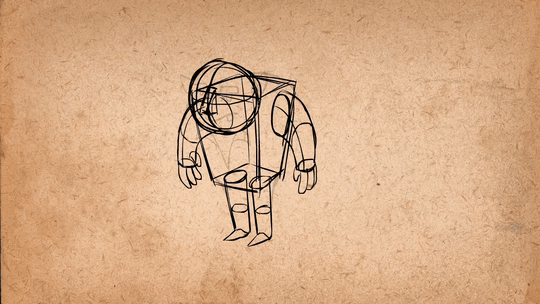
The next form of animation is simple hand drawn animation within a three dimensional space. Being consistent is usually taken into consideration have the same perspective throughout.
12. Appeal

The 12 and final principle of animation is Appeal and this is where all the characters, objects and worldly environment need to appealing towards the viewer to the viewer. This involves simple solid drawing, designs and good character animation to use for the story.
Powerpoint and essay plan.
How does visual effects impact film narrative?
What is film narrative?
The definition of the term film narrative is the development of a particular films story and the telling of a chain of events occurring in time and space. The narrative also conveys the roles of the main characters and the relationships they have within the film.
Visual effects in early film
At the beginning of the 1900 the beginning of visual effects was born and was know to revolutionise cinema and the way of its storytelling as a whole.

This image is a scene from the film ‘A trip to the moon’ by George Méliès which was the first science fiction film ever created as well as the first movie to ever use special effects.
Another example of early use of special effects was the 1933 king Kong.

This movie created 4 scaled sized models for its stop form animation technique.
The important role of visual effects in storytelling.
Visual effects are so pivotal to film and its narrative delays have occurred and many movies simply cant function without it.
This occurred with James Cameron’s Avatar which was released 2009.
The film was originally meant to release in 1999 but as a result of the lack of technology to produce the film it was released a whole 10 years later.

Having better visual effects during this time allowed Cameron to create the world he visioned for Avatar as it was pivotal for the plot of the story.
Visual Effects negative impact on film narrative.
However too much visual effects may have a negative impact on films and its narrative and even though the Avengers films were a success they have been criticized by a director called Martin Scorsese.

He stated that the Avengers film are not cinema and related them to fun rides and roller-coasters in theme parks.
Some may also argue that films that use less visual effects have a better story as they are not so reliant on using special effects to assist its narrative.

These two films Joker and the Irishman released in 2019 were both considered movie masterpieces and were mainly praised as a result of its narrative and story driven aspect.
